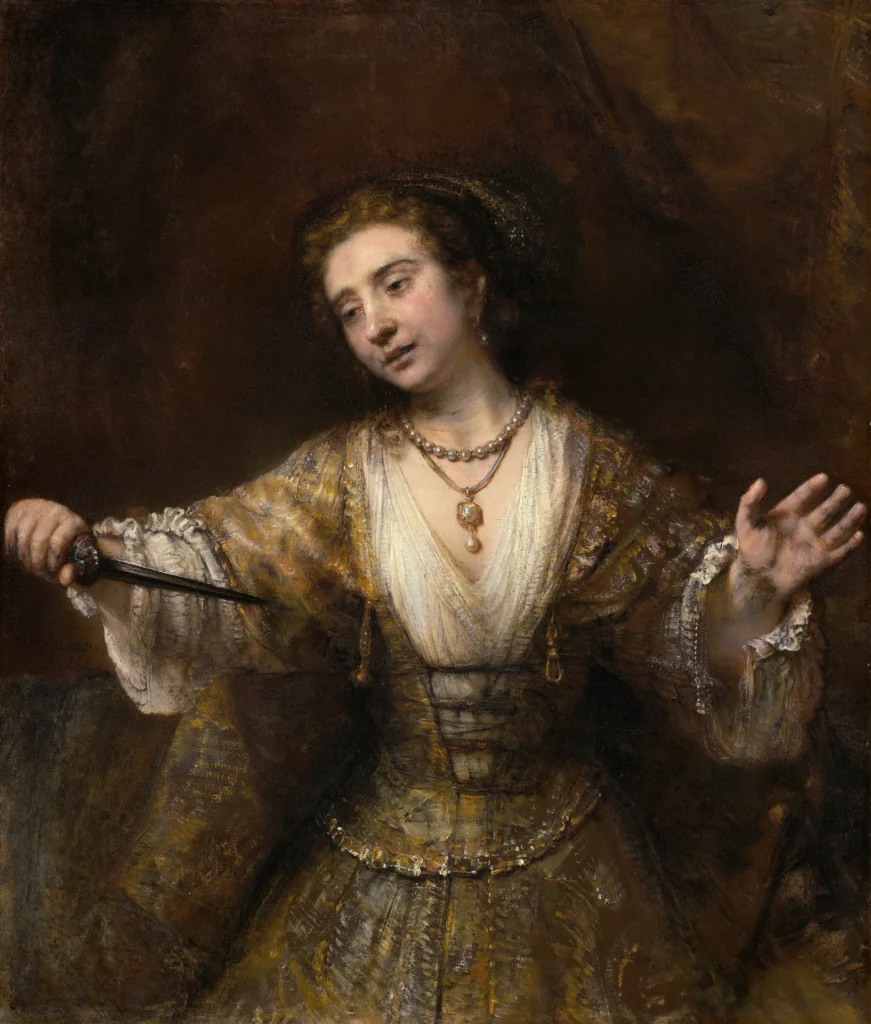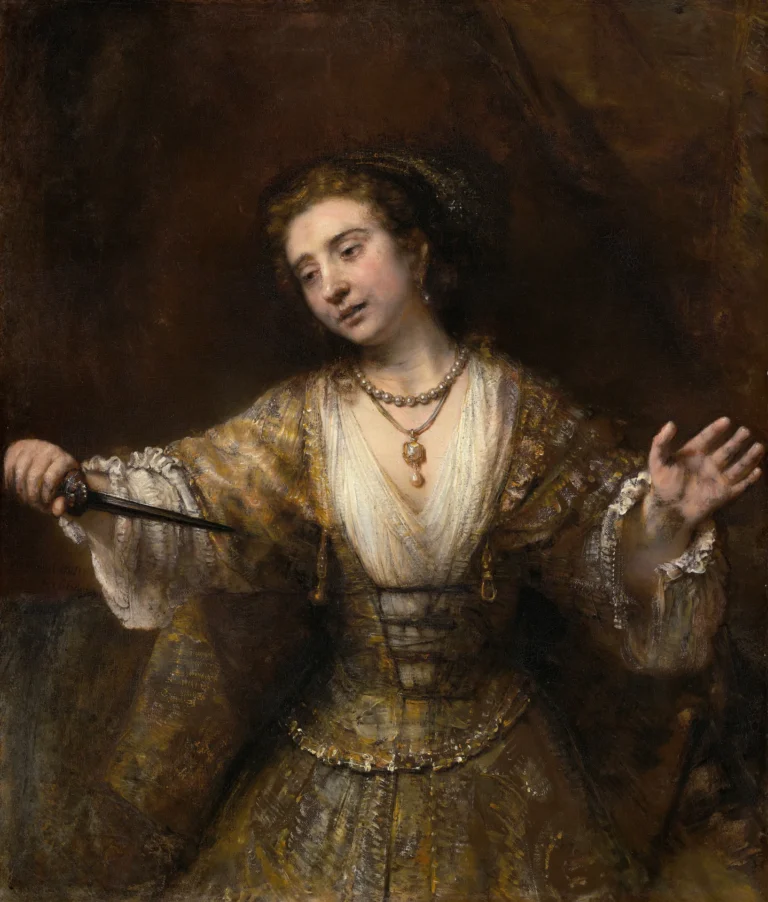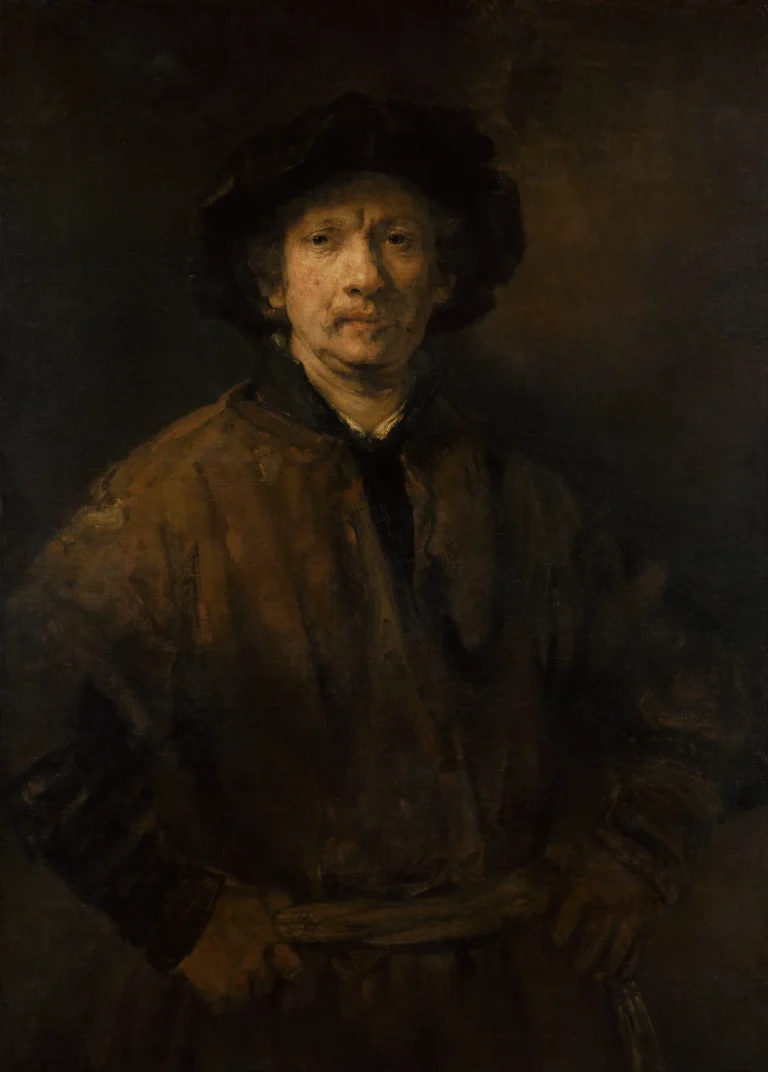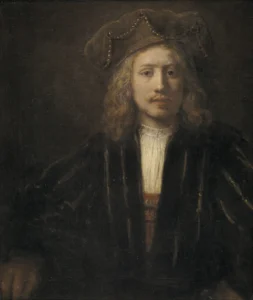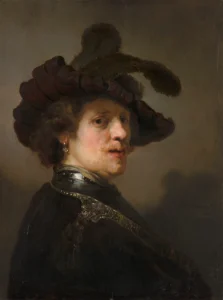Lucretia(1664)
Painted in 1664, Rembrandt's Lucretia captures the dramatic moment before the Roman noblewoman takes her own life. With her expression of determination and her opulent attire, which includes a rich greenish gold dress and pearls, the artwork evokes both tragedy and strength. The painting's authenticity has been debated, with suggestions that it might be partially the work of Aert de Gelder, which adds to its intrigue within art circles.
Year 1664
About the Artwork
The narrative of Lucretia centers around the legendary figure from Roman history, who chose death over dishonor after being assaulted by the son of the king. Her choice symbolizes the ultimate act of defiance and valor, emerging as an emblem of moral integrity. Rembrandt's portrayal captures this intensity, yet discussions regarding the work's authenticity add layers of complexity to its legacy, suggesting possible involvement from Aert de Gelder, who was influenced by Rembrandt's techniques. The painting conveys a rich tapestry of emotion and historical significance, standing as a dialogue between the artist and his pupil.
Did You Know
Lucretia was a Roman noblewoman whose tragic story inspired countless artists throughout history. She was revered for her virtue and honor, and her decision to take her own life after being attacked by the son of the king became a powerful symbol of female virtue and justice.
The painting has sparked debate regarding its attribution, with some experts suggesting it may have been executed by Aert de Gelder, a student of Rembrandt, rather than Rembrandt himself. This discussion highlights the complexities of art authenticity and the influence of master-pupil relationships in the 17th century.
The 1666 version of Lucretia is often considered more emotional and deeply personal, reflecting Rembrandt’s own life experiences. Critics argue it captures a heightened sense of despair and angst, an evolution of the artist’s emotional depth that contrasts sharply with the earlier version painted in 1664.




